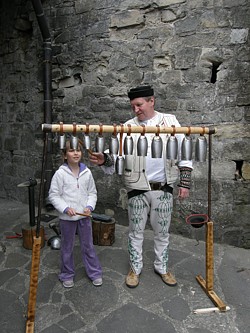Elena Beňušová
The economical and social changes which came about after WWI had a negative impact on the existence of many arts and crafts, not only those in Orava. Craft production was gradually replaced by industrial factories in the second half of the 20th century. Only the crafts that weren’t economically important, or couldn’t be replaced, survived. The fact that the Orava region neighbors with Poland affects this status, as Poland has been a major supplier of cheap materials and finished products. Even despite this situation, some traditional crafts have survived, though some have a new face. The continuation of the article about the current situation of craft production in Orava provides an overview of the situation in other production sectors An important craft in Orava was blacksmithing. Currently it encompasses mainly horseshoe-making but also blacksmith work, repair of agricultural machinery and tools, not only within the Orava region. Several master craftsmen are devoted to this work as well as some hobbyists.
Widespread and present today is the production of bells.
The oldest folk crafts in the region, which are still very much alive, include pottery with a wide range of products, mostly utilitarian items, stonework, represented by sculpture making and reliefs from sandstone blocks, weaving, which is experiencing a renaissance in the last decade in the form of hand-woven rugs, and the processing of leather and belt work.
